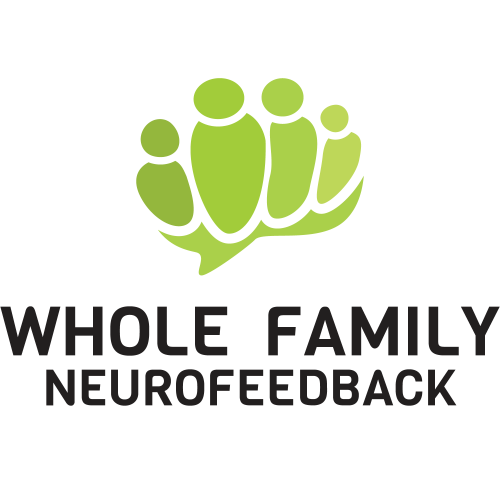Take Back Your Life From Chronic Back Pain
While 25% of adult males experience lower back pain, 33% of women do, too.1
More than 25 million people in the United States live each day with some type of chronic pain – back pain being the most common.2
Today we’re going to talk about why women experience more chronic back pain and how you can manage your pain – even when doctors say there’s nothing left to do.
Why Do Women Have Chronic Back Pain?
As a woman, you’re more vulnerable to chronic back pain because of higher levels of hormones that can contribute to increased sensitivity.3
You’re at an increased risk of chronic back pain if you’ve experienced:3
- Childbirth
- Endometriosis
- Cancer
- Painful menstrual cycles
- Autoimmune disorders
You go to the doctor to get some relief only to be told that they can’t find any reason for your pain. This happens all too often, leaving many women confused, frustrated, and hopeless.
You know firsthand – your pain makes it hard to stand for long periods of time, which can drastically affect the quality of your life. Working, cooking, gardening, or spending time with your kids can become dreaded tasks when living with chronic back pain.
Sometimes, traditional medicine can only take you so far. Chronic back pain is complex and your brain plays a role in how you perceive and experience pain.
Your Brain’s Role In Chronic Back Pain
There are many reasons you have chronic pain. You can feel pain because:
- Doing certain physical activities cause pain
- You associate an activity and event with the original injury
- Fear and anticipation of what you’re doing causes the pain to come back
Your brain is so powerful that it can actually be the reason you feel physical pain, long after an injury has healed. In 85% of people with chronic back pain, doctors cannot find a physical cause.4
This doesn’t mean your pain isn’t real. Often, the brain is still firing signals that you should be feeling pain because your brain has learned the pain. Pain can even live within your memory.
Let’s dive deeper into this.
When you first experienced your back pain, you also experienced a range of emotions tied to the initial reason you experience it (and the pain that followed!) The brain actually stores memory and emotion together, and the stronger the emotions experienced, the deeper the memory is stored.
This means: anything associated with that event is going to trigger those intense emotions and the pain experienced.
Experiencing chronic back pain is complex. We’re going to give you two, slightly unconventional ways, to help you manage your pain.
Therapy For Chronic Back Pain
Many women are told “It’s all in your head. You should talk to someone.”
But this isn’t the advice you’re going to get here.
There are actually therapists that specialize in chronic pain. These therapists are highly specialized and trained in an evidence-based program to help you unlearn your chronic back pain and stop the fear-pain cycle.
Part of this therapy includes having an open dialogue about what you’re dealing with. The more open you are with your experiences and feelings surrounding your pain the better your results will be.
Working with a therapist not only helps you to reduce your pain and improve the quality of your life, but it also increases:
- Self-awareness
- Understanding
- Acceptance
- Resilience
And, it gives you valuable insight into how your experiences impact you mentally and physically.
This can be done through individual counseling sessions, group classes, or mindfulness practices such as yoga or meditation.
Cognitive exercises like journal writing explore your inner dialogue around your chronic pain. Reflecting on lifestyle changes or stress caused by an injury can be really insightful. You gain greater clarity of what works best for you and you gain clarity of the chronic pain itself.
Recognizing patterns in how you respond emotionally when experiencing pain, reframing these thoughts into more adaptive ones, and practicing relaxation techniques (such as deep breathing or guided imagery) help you manage your pain and manage your responses to it.
Ultimately, this leads to overall improved well-being and physical functioning.
There is also research showing that resilience and positive emotions have an impact on how we cope with chronic pain.
Learning Resilience
Most people understand resilience as bouncing back from a difficult situation and recovering from adversity.
While this is true, the mindset around resilience is often fixed: you either are resilient or you’re not.
This isn’t true. Like any life skill, it can be developed.
You can increase your resilience by:
- Developing a strong social support network
- Practice having a more positive outlook
- Focus on what you have control of in your life
- Let go of what you don’t have control over
- Adapting to any physical limitations you might have
You can develop resilience at any age. Neurofeedback is also a tool that can be used to help develop resilience in your life.
Neurofeedback Promotes Resilience
Neurofeedback has been around for decades, helping people optimize their brains and promoting a healthy lifestyle. Neurofeedback is a brain training system that gives the brain information about itself.
Neurofeedback reads your brain’s electrical activity and gives your brain a chance to self-correct, moving your brain towards more comfortable and efficient patterns.
Most neurofeedback sessions are done with a practitioner in an office setting. But neurofeedback can be done at home.
NeurOptimal® – At Home Neurofeedback
NeurOptimal® is the only professional grade, at home neurofeedback system. The setup is so easy that anyone can do it.
You’ll receive all the equipment you need along with support on how to use it. Once you start your sessions, all you’re going to do is sit back and listen to music or watch a movie. When the equipment detects a difference in your brain’s pattern you’ll receive a signal. This signal is just a brief pause, bringing your attention back to the present moment.
Over time, your brain learns the best, most efficient pattern for you.
Neurofeedback helps promote emotional fitness and an overall healthy lifestyle. If you live with chronic back pain, neurofeedback can help you:
- Live within your limitations better
- Increase mental flexibility and resilience (which makes coping easier)
- Improves concentration, problem-solving, and logic
- Promote relaxation and stress management
Living with chronic back pain means you also live with chronic stress, anxiety, and fear of the pain coming back. Neurofeedback helps promote relaxation and can improve your resilience.
Here’s how neurofeedback helped one of our clients:
“Neurofeedback creates a meditative audio and visual environment so you can relax while your brain is monitored and trained. I’ve only had three sessions but even after one, could tell I was more focused and less anxious in general.” ~Celeste, Fort Collings, CO
Do you have questions about neurofeedback?
Do you want to learn how to get started?
fill out our contact form here or call us at 303-222-5118. We’re happy to answer any questions you may have!
References
- Findings From The Global Burden of Disease Study
- Retraining the brain to treat chronic pain
- Association between history of childbirth and chronic, functionally significant back pain in later life – PMC
- National Institute of Health. Retraining the brain to treat chronic pain
Disclaimer: This site contains information on general health and wellness topics. Please note that Neuroptimal® has been designated a general wellness product by the FDA. The information on this site or in any linked materials should not be construed as medical advice. The information in this article is not intended to replace any recommendations by your physician.

